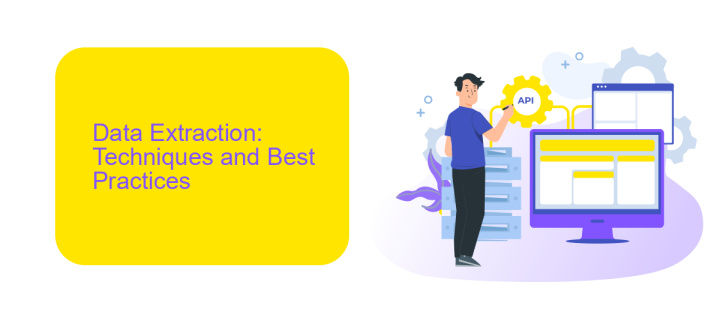Data ETL Jobs
Data ETL (Extract, Transform, Load) jobs are essential in managing and optimizing the flow of data within organizations. These roles involve extracting data from various sources, transforming it into a suitable format, and loading it into data warehouses or other systems. As businesses increasingly rely on data-driven decision-making, the demand for skilled ETL professionals continues to grow.
Introduction to Data ETL Jobs
Data ETL (Extract, Transform, Load) jobs are essential processes in modern data management. They involve extracting data from various sources, transforming it into a suitable format, and loading it into a target system. This process ensures that data is accurate, consistent, and ready for analysis.
- Extract: Collect data from multiple sources, such as databases, APIs, and flat files.
- Transform: Clean, normalize, and enrich the data to fit the desired format and quality standards.
- Load: Insert the transformed data into a destination system, such as a data warehouse or data lake.
Efficient ETL processes are crucial for businesses to make informed decisions based on reliable data. Tools like ApiX-Drive can simplify the setup of these integrations by automating the data flow between different systems. This not only saves time but also reduces the risk of errors, ensuring that your data pipeline is robust and efficient.
Data Extraction: Techniques and Best Practices

Data extraction is a critical step in the ETL (Extract, Transform, Load) process, where raw data is collected from various sources for further processing. Techniques for data extraction vary depending on the nature of the data source, such as databases, APIs, or flat files. Common methods include full extraction, where entire datasets are retrieved, and incremental extraction, which only pulls new or updated data since the last extraction. Choosing the right technique depends on factors like data volume, frequency of updates, and system performance.
Best practices for data extraction emphasize the importance of data quality and efficiency. It is crucial to ensure that the extracted data is accurate, complete, and consistent. Tools like ApiX-Drive can streamline the integration process by automating data extraction from various sources, reducing manual effort and minimizing errors. Regular monitoring and validation of the extraction process are essential to maintain data integrity. Additionally, documenting the extraction procedures and maintaining a clear audit trail can help in troubleshooting and compliance with data governance policies.
Data Transformation: Cleaning, Filtering, and Aggregating

Data transformation is a crucial step in the ETL process, ensuring that raw data is converted into a clean, usable format. This phase involves several key tasks that help in refining and structuring the data.
- Cleaning: This step involves identifying and correcting errors or inconsistencies in the data. It includes handling missing values, removing duplicates, and correcting data types.
- Filtering: Filtering is used to select relevant data based on specific criteria. This helps in reducing the dataset to only the essential information needed for analysis.
- Aggregating: Aggregation involves summarizing data to provide insights. This can include calculating averages, sums, or counts to transform detailed data into a more understandable format.
These steps are vital for ensuring data quality and reliability. Tools like ApiX-Drive can simplify the integration and transformation process by automating data cleaning, filtering, and aggregation tasks, making it easier for businesses to manage their data workflows efficiently.
Data Loading: Methods and Optimization

Data loading is a critical phase in the ETL (Extract, Transform, Load) process, where transformed data is loaded into a target database or data warehouse. Efficient data loading ensures that the data is readily available for analysis and reporting. There are various methods to optimize this process, each with its own advantages and challenges.
One common method is bulk loading, which is designed to handle large volumes of data quickly. Another approach is incremental loading, which updates only the new or changed data, reducing the load time and resource usage. The choice of method depends largely on the specific requirements and constraints of the data environment.
- Bulk Loading: Ideal for initial data loads and large datasets.
- Incremental Loading: Efficient for regular updates and smaller changes.
- Partitioning: Divides data into manageable segments for parallel processing.
- API Integrations: Services like ApiX-Drive can streamline data loading from various sources.
To optimize data loading, it's essential to monitor performance and adjust configurations as needed. Utilizing services like ApiX-Drive can simplify the integration and automation of data loading processes, ensuring data consistency and reliability. By carefully selecting and optimizing data loading methods, organizations can achieve faster and more efficient data workflows.
- Automate the work of an online store or landing
- Empower through integration
- Don't spend money on programmers and integrators
- Save time by automating routine tasks
Data Validation and Quality Assurance
Data validation and quality assurance are critical components of any ETL (Extract, Transform, Load) process. Ensuring the accuracy and reliability of data involves various techniques such as data profiling, data cleansing, and data enrichment. Data profiling helps in understanding the structure, content, and relationships within the data. Data cleansing involves correcting or removing inaccurate records, while data enrichment enhances the data by adding relevant information. These steps are essential to maintain the integrity and usability of data throughout its lifecycle.
Integrating automated tools can significantly streamline the validation and quality assurance processes. For instance, ApiX-Drive offers robust integration capabilities that facilitate seamless data exchange between various systems, ensuring that data is consistently validated and up-to-date. By leveraging such tools, organizations can automate routine tasks, reduce human error, and enhance overall data quality. Continuous monitoring and validation using these integrations ensure that any anomalies or discrepancies are promptly identified and addressed, thereby maintaining high standards of data quality.
FAQ
What is ETL in data processing?
Why is ETL important?
What are the common challenges in ETL processes?
How can I automate ETL processes?
What factors should I consider when choosing an ETL tool?
Time is the most valuable resource in today's business realities. By eliminating the routine from work processes, you will get more opportunities to implement the most daring plans and ideas. Choose – you can continue to waste time, money and nerves on inefficient solutions, or you can use ApiX-Drive, automating work processes and achieving results with minimal investment of money, effort and human resources.


